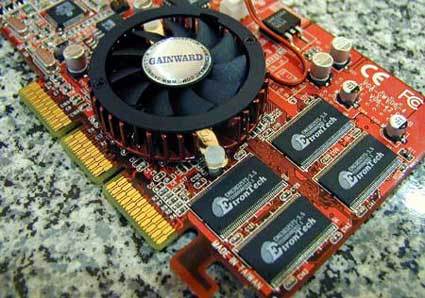Gainward's MX400: Serious Competition For The GeForce2 GTS?
The Memory: SDRAM At 3.5 Ns
Gainward made a wise choice in fitting its board with SDRAM. As you might know already, the GeForce2 MX also supports the much faster DDR memory (double data rate), in addition to the usual SDR (single data rate). Unfortunately, NVIDIA limits the DDR interface to 64-bit instead of the standard 128-bit, so that the cards with 64-bit DDR cannot perform faster than models with 128-bit SDR.
DDR SDRAM is still more expensive than standard SDRAM, so Gainward made a wise choice in using the fastest SDRAM available. As the GeForce2 MX is not much different from the GeForce2 GTS or Pro, any versions of the MX which runs at faster clock speeds would reduce the advantage of GTS performance and decrease its value as well. This is why NVIDIA does not want manufacturers to ship their graphics boards with clock speeds that exceed the default values (in the case of MX 400, the default values are 200 MHz core and 166 MHz memory).
Board Advantage: Complex PCB Design
Gainward invested a lot of effort in creating this Super-MX board, which is designed as a 6 layer PCB board. Normally, only GeForce2 Ultra or GeForce3 boards (as well as motherboards based on Intel's 850 chipset) are lavished with this type of design. 260 MHz memory speed are actually even faster than the 230 MHz of a GeForce2 Ultra or GeForce3 (though those boards are available with DDR technology only, resulting in doubled performance).
The current board design allows memory clock speeds of almost 270 MHz, while the memory package is the limiting factor right now. Next generation memory chips in BGA packages could support 300 MHz for the first time (at cycle times of 3.3 ns).
Get Tom's Hardware's best news and in-depth reviews, straight to your inbox.

Patrick Schmid was the editor-in-chief for Tom's Hardware from 2005 to 2006. He wrote numerous articles on a wide range of hardware topics, including storage, CPUs, and system builds.
